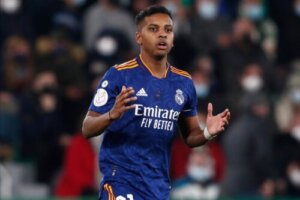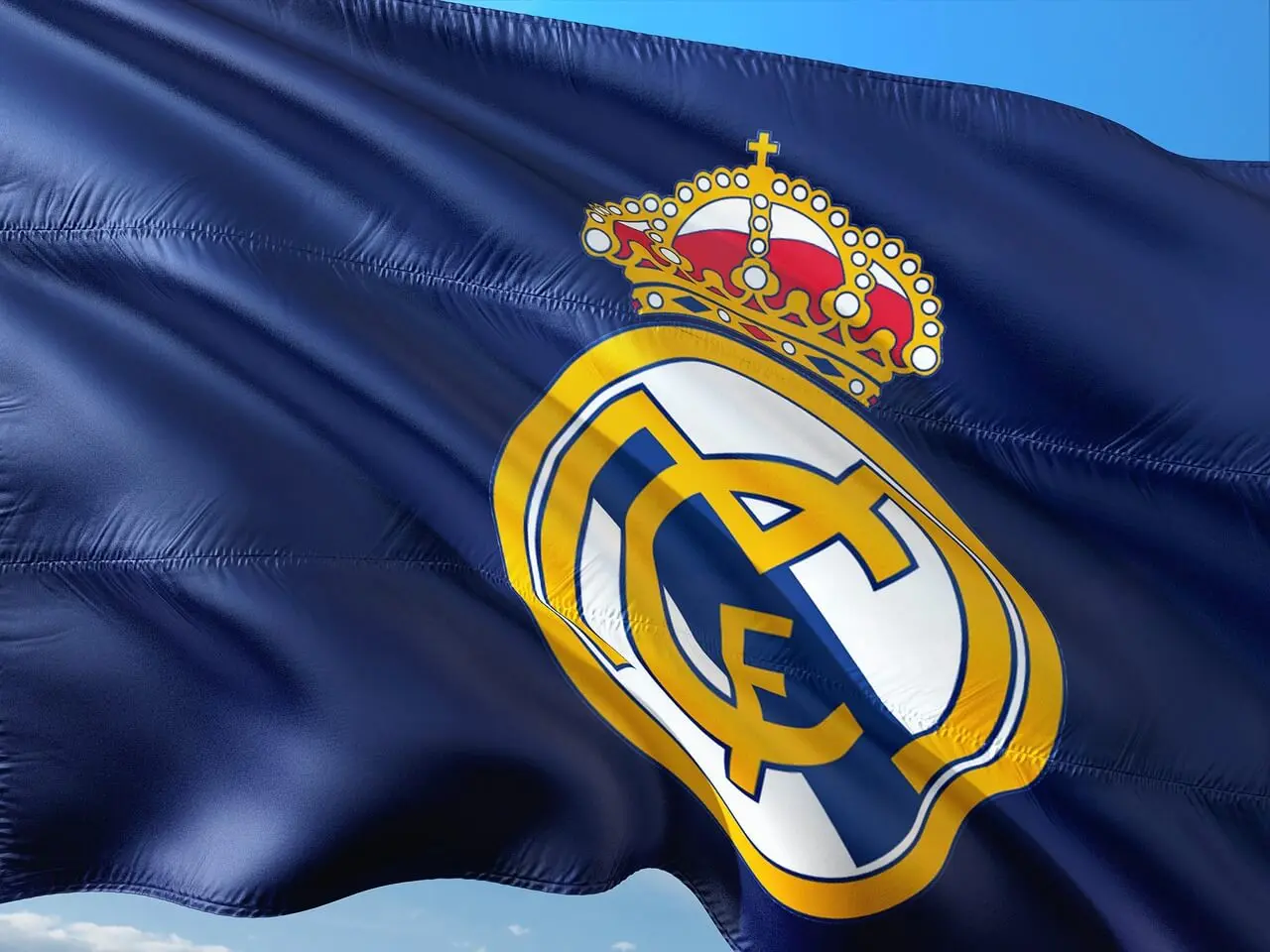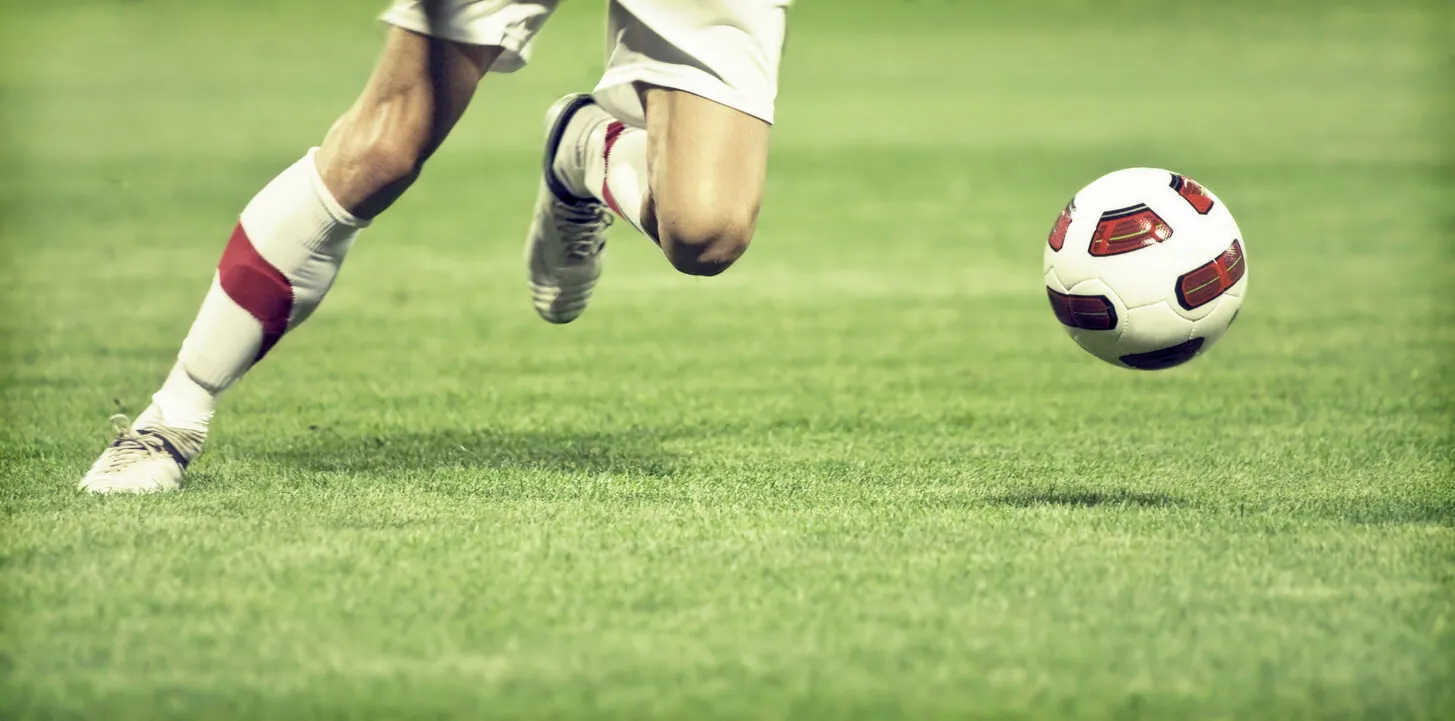What Is Rodrygo Goes' Training Routine?


Written and verified by the doctor Leonardo Biolatto
Rodrygo Goes is a new hero at Real Madrid. In the last game against Manchester City, the young Brazilian turned the tide and set up the more veteran Benzema to set up the clincher in the Champions League semifinal.
What is this 21-year-old made of that explodes with precision on the field? Well, he’s been with the same personal fitness trainer has been with him since he was 13 years old and has confessed that he’s not looking for noticeable muscle, but speed and reaction.
In this article, we’ll tell you some of Rodrygo Goes’ personal story and training secrets that are positioning him as an undisputed striker for Real Madrid and the Brazilian National Team.
Rodrygo Goes’ life story
The young Real Madrid promise was born in Osasco, a part of Sao Paulo (Brazil), in 2001. His father has always been a soccer fan and passed that passion on to his son.
In fact, he did this so much so that his dream was to play for Real Madrid. Goes’ father was a fan of Real Madrid all the way from South American and had known Robinho, the one chosen by Pelé himself as his predecessor.
At the age of 9, Santos signed Rodrygo Goes. It’s the same club that cradled Pelé. In 2017, he went from the youth ranks to the first division, as everyone noticed he had a special touch.
The 2018 season with Santos ended up establishing him. Goes played 58 games that year and scored 12 goals. However, he also finished with 12 assists, so he caught the attention of European soccer.
In 2019, Real Madrid bought his contract. Similar purchases have happened before, but he wasn’t old enough to comply with international recruitment regulations.
His two goals against Manchester City in a game as important as this week’s match account for the fact that he’s a natural goal scorer. Also, the fact that he has been with the same personal trainer for almost 10 years gives us an indication of the Brazilian’s dedication.

Speed rather than strength
Rodrygo Goes’ personal trainer is Marcel Duarte. He was hired by the youngster’s father to provide him with continuous long-term follow-up. So much so that they have been together for almost 10 years now.
Our focus is entirely on the quality of his movements and his skills and characteristics. -Marcel Duarte
Although he’s reluctant to admit that they are doing significant strength work, the photos leave no room for doubt. In fact, the striker recently published different images that evidence the growth of his muscle mass on his social networks.
After all, today’s soccer does not admit weak bodies or that remain stagnant. Several elite players are proof that the gym plays an important role in high performance. Such is the case of Goretzka, Cristiano Ronaldo, or Lewandowski.
However, muscle mass cannot leave aside the explosion, especially for forwards. That’s why Goes is agile on the field and moves with ease.
We think you may also enjoy reading this article: Soccer Player Injuries that Have Prevented Them From Playing in the World Cup
Balancing aerobic with anaerobic exercises
From what we know, Rodrygo Goes’ training combines strength routines with running. The player has been seen jogging around his home when recovering from injuries, for example.
Sports medicine research highlights the importance of balance. Thus, it’s important that an increase in total muscle mass doesn’t result in becoming heavier to run 90 minutes, for example, or when a player needs to sprint when reaching for a ball.
Balance is achieved when the muscle that’s enlarged is actually able to work with oxygen. This measurement will indicate that the athlete not only lifts weights with ease, but can move with ease.
Strength is very important, but balance is necessary. -Rodrygo Goes
One of the keys to achieving this is to reduce body fat to near-minimal levels. From movie actors like Henry Cavill to one of the world’s best soccer players, Cristiano Ronaldo, it seems that the percentage of lipids attached to muscle has become an obsession!
Like this article? You may also like to read: Kylian Mbappé: The Rigorous Exercise and Diet Routine of Soccer’s Next Big Star
Lower body fat with exercise and diet
Exercise alone is not enough to reduce body fat to minimal levels. Rodrygo Goes has a strict eating plan, like many other soccer stars. These guidelines base calories on protein and healthy fats, leaving simple carbohydrates in second place.
At the same time, as studies of elite young soccer players indicate, certain routines promote explosive reactions. Among these, the most important are the following:
- Jumps from a squat
- Jumps with counter-movements
- Short sprints
The repetition of these point exercises leads to the muscles recruiting various fibers. When the parts of muscle tissue intended for fast movements come into action almost daily, they then unleash their full potential in the match.
Reducing body fat in elite soccer seeks to remove lipids found between muscle fibers, especially among the faster ones. This accelerates reactivity, and the player is then able to take better advantage of oxygen to be fast.

Rodrygo Goes, a player with a future
Rodrygo Goes’ training and discipline assure us of an exceptional soccer player for many more years to come. His Real Madrid teammates also say that he never gets into conflict, that he always listens to instructions, and that he uses the older players in the squad to learn, like Modric.
Given the obvious results, we can pretty much assume that his personal trainer will also remain the same. He’s helped the young player reach the most important games in the world, and they’re both hungry to continue.
All cited sources were thoroughly reviewed by our team to ensure their quality, reliability, currency, and validity. The bibliography of this article was considered reliable and of academic or scientific accuracy.
- Chamorro, R. G., & Lorenzo, M. G. (2006). Volumen de oxígeno por kilogramo de masa muscular en futbolistas. Revista Internacional de Medicina y Ciencias de la Actividad Física y del Deporte/International Journal of Medicine and Science of Physical Activity and Sport, 6(21), 44-61.
- Di Giminiani, R., & Visca, C. (2018). Adaptaciones de la Fuerza Explosiva y de la Resistencia en Jugadores de Fútbol de Élite Jóvenes Durante dos Temporadas de Fútbol-Ciencias del Ejercicio. Revista de Entrenamiento Deportivo, 32(3).
- Acero, R. M. (2000). Velocidad en el fútbol: aproximación conceptual. Revista Digital, Buenos Aires, ano, 5.
- Obando, D. A. A., Martinez, A. I. C., Moreno, E. R. A., Patarón, C. P. E., & Caguana, J. G. C. (2021). Los ejercicios isométricos como preparación física en el rendimiento deportivo de jóvenes futbolistas. Polo del Conocimiento: Revista científico-profesional, 6(6), 1279-1294.
This text is provided for informational purposes only and does not replace consultation with a professional. If in doubt, consult your specialist.








